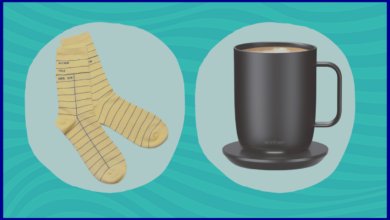Halsey reveals she has lupus and a rare blood-cell disorder. Here’s what to know.

Halsey announced in a June 5 Instagram post that she has lupus, an autoimmune disease which was diagnosed in 2022, and a rare white blood-cell disorder. In a prior post announcing the release of her single, “The End,” Halsey said she was “lucky to be alive,” and included photos and videos of herself in the hospital where the 29-year-old said she felt “like an old lady.” While Halsey’s health conditions are either “being managed or in remission,” after two years spent trying to “get everything under control,” she will likely have both conditions for the rest of her life, she said.
Here’s what to know about lupus and white blood cell disorders.
What is lupus?
Affecting some 1.5 million Americans, lupus is a chronic autoimmune disease in which cells meant to fight off infections mistakenly attack healthy parts of the body instead. This off-target immune response causes inflammation that can strike just about any part of the body, including, commonly, the skin, joints and internal organs, including the kidneys and heart, according to the Lupus Foundation of America.
There are four main types of lupus. Halsey was diagnosed with systemic lupus erythematosus (or lupus SLE), which is both the most common and the most serious form of the disease, according to LFA. Another form, cutaneous lupus, primarily affects the skin. There are also a few types of medications, including certain antibiotics as well as seizure, anti-inflammatory and blood pressure treatments, that can trigger drug-induced lupus erythematosus, or DILE. In rare cases, mothers can pass on the disease to their developing babies, causing neonatal lupus.
What causes lupus?
Lupus’s root cause remains unknown. People with lupus are thought to have an inherited disposition to developing the condition, “especially if they come into contact with something that may trigger the disease, such as increased sunlight, an infection or certain medications,” the Mayo Clinic’s Dr. Jesse Bracamonte, tells Yahoo Life. No lupus genes have been identified, but it runs in families.
Although it’s unclear why, “nine out of 10 people with lupus are women, and 43% of those are women of color,” says Stacie Bell, an autoimmune research scientist and executive vice president of Lupus Therapeutics. The disease also tends to be more severe in women of color, Bell adds.
What are the symptoms?
Unpredictability is a hallmark of lupus. “Symptoms present so differently in every individual with lupus,” Bell says, adding that this variation makes the disease particularly hard to diagnose. The closest thing to a telltale sign of the disease is the so-called butterfly rash (or malar rash) — a red rash across the cheeks and the bridge of the nose that appears after sun exposure. But only about half of all people with lupus develop the rash, according to Johns Hopkins Lupus Center.
There are many other potential symptoms, and might seem unrelated to someone who doesn’t know they have the disease. Inflammation from lupus can strike many different parts of the body with varying degrees of severity, causing a wide array of symptoms, which often come in flare-ups that may occur as often as monthly, or even years apart, says Bell. And the same person may have one set of symptoms during one flare up and an entirely different set — at a different level of severity — during another flare up, according to the NIAMS.
Lupus inflammation can also cause arthritis, or painful swelling of the joints. General achiness, fatigue and brain fog also affect many lupus patients, as does swelling in other locations, like around the eyes or in the legs.
While the signs may be less noticeable day to day, the most concerning effect of lupus SLE — the form Halsey says she was diagnosed with — is the damage inflammation can do to organs throughout the body. Bracamonte says that the kidneys are the most frequently affected, but damage can also strike the heart, blood vessels, the lining around the lungs and the brain.
Some people with lupus may have relatively rare or mild flare-ups. For others, the disease, especially the fatigue it causes can be so debilitating that patients “can’t get out of bed to take [their] daughter to the bus stop, or do [their] presentation at work,” Bell says.
Can lupus be treated?
There is no cure for lupus, but there are some treatments to help manage the symptoms and lessen organ damage. Steroids were among the first treatments used to treat lupus by quieting the overactive immune response that triggers inflammation. But, when used long term, the drugs themselves can cause other problems, including weight gain and bone weakness, according to Yale Medicine.
Now, there are two antibody treatments approved by the Food and Drug Administration to treat lupus SLE, and researchers are working on developing targeted “cell therapies” for lupus, says Bell. But in the meantime, there is a “limited treatment arsenal,” she says.
What is Halsey’s rare blood-cell disorder?
Halsey has a T-cell lymphoproliferative disorder, one of a broad set of conditions resulting from the body’s overproduction of certain white blood cells, called lymphocytes. T-cells are a type of white blood cell made in the bone marrow that is sometimes affected by lupus, increasing the risk of these blood-cell disorders (though not everyone who has lupus has a lymphoproliferative disorder or vice versa), says Bracamonte. T-cell proliferative disorders can cause severe night sweats, fatigue, unexplained fevers or weight loss and swollen lymph nodes.
Bracamonte says that people with these types of conditions are typically monitored closely because lymphoproliferative disorders can progress into the blood cancers, leukemia or lymphoma.
Are there ways to reduce your risk of lupus and its complications?
Because lupus is likely hereditary, there is only so much you can do to reduce your chance of contracting it, says Bell. However, healthy lifestyle choices — like getting enough sleep, eating a Mediterranean or other anti-inflammatory diet, not smoking, not drinking in excess, staying active and avoiding excess weight — can reduce inflammation. You can also try to minimize triggers, which include stress and overexposure to sunlight.




